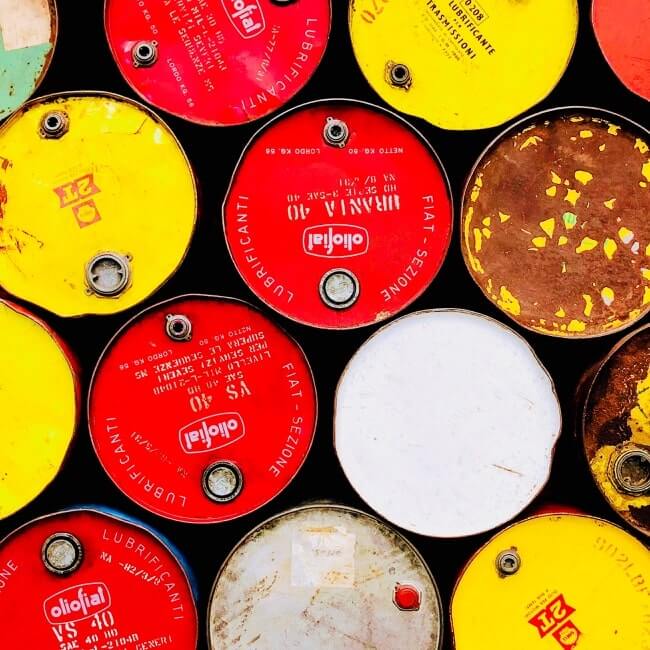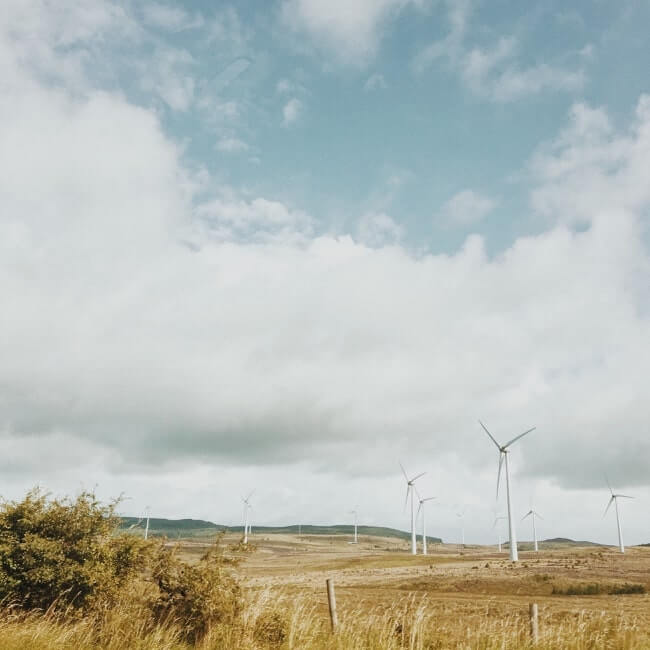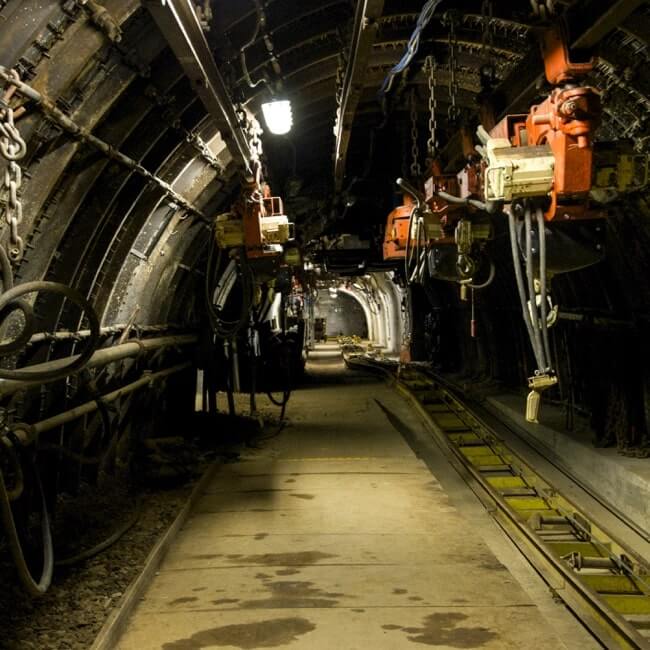Scaling up Colombia's clean hydrogen economy

Despite ongoing challenges, Colombia is on track to have at least 1GW of electrolysis capacity for green hydrogen production by the end of the decade, according to the Andi-Naturgas hydrogen chamber.
In this, the second of a two-part interview, the chamber's executive director, Karen Peralta, tells BNamericas why the future is bright for the nascent sector. The first part of the interview can be seen here.
BNamericas: How are the projects currently in development being financed, and how do you see the financing landscape for the sector in the coming years? Will there be enough support from banks, private equity and the government to ensure that the sector grows as expected?
Peralta: At the moment, the projects developed in Colombia – mainly pilot projects – are funded through companies' own resources and some incentives from the science, technology and innovation system, as these projects are research-oriented. Industrial-scale projects currently lack external financing and rely solely on corporate resources.
We see opportunities to channel funding from multilateral banks and international cooperation organizations. We also see opportunities in certain public funds available in the country to support such initiatives, and we believe there's room to enhance tax incentives for hydrogen projects in Colombia.
Green, blue and white hydrogen projects already benefit from tax incentives, but there’s potential to deepen and extend these incentives to hydrogen derivatives. Thus, we envision three main paths: accessing international funding, utilizing public resources, and improving tax incentives.
BNamericas: Beyond encouraging green hydrogen production, consumption must also be stimulated. Logic dictates that without supply, there’s no demand, and vice versa. How do you think Colombia should address this challenge of growing demand while aligning it with increased production capacity?
Peralta: Colombia’s hydrogen strategy, outlined in our roadmap, identifies two priority sectors for hydrogen deployment: refineries and fertilizers. These sectors were chosen because they already use hydrogen derived from fossil fuels, so there’s an existing market. The challenge is to make low-emission hydrogen competitive with gray or fossil-based hydrogen. Colombia should start by decarbonizing these industries with clean hydrogen.
There are different challenges for other applications, such as transportation. Here, hydrogen must not only compete with alternatives like gasoline and diesel but also require technologies to be cost-effective. For example, we need fuel cell trucks to reach cost parity with diesel vehicles, which is a significant challenge. Similarly, in the industrial sector, equipment adapted to hydrogen use must be renewed.
BNamericas: Is there interest in developing blue hydrogen in Colombia? If so, what are the short- and medium-term prospects for blue hydrogen in the country?
Peralta: We estimate blue hydrogen production could reach about 200,000t/y by 2030. These initiatives are mainly led by the country’s refineries, which already produce hydrogen and only need to adopt carbon capture technologies. In fact, Colombia already produces blue hydrogen at the Barrancabermeja refinery, where the captured CO² is used in other industries.
Current research is exploring additional areas for CO² injection to scale these projects. As part of the Colombian natural gas association, we acknowledge the country’s gas challenges. However, instead of seeing this as a major hurdle for the hydrogen industry, we view it as an opportunity for industries to explore new energy sources, including hydrogen. We hope offshore gas projects and renewable energy potential will be fully developed, enhancing competitiveness in hydrogen.
BNamericas: Colombia needs installed wind and solar capacity to produce green hydrogen, but these sources currently represent a small fraction of the country’s capacity. Are delays in these projects concerning? What role could offshore wind play, considering the competitive process already underway?
Peralta: What we've seen is that if there aren’t energy surpluses, hydrogen projects can't be developed, as supply and demand would remain tight. Similarly, without new transmission infrastructure, hydrogen projects won’t materialize, as not all of them will rely on self-generation.
Generation and transmission are two critical enablers for the development of hydrogen projects. While there have been delays in renewable energy projects, significant progress has been made in recent months and we've seen them gaining traction through mechanisms like the latest energy auction by the ministry of mines and energy. However, more auctions are needed to increase energy supply.
Some of the issues to take into account for the development of these renewable energy projects include prior consultations for project approval, environmental concerns, and registration with the mining and energy planning unit. But we know that all these entities are working together to improve their capacity to respond more efficiently to project requests.
On offshore wind, it’s promising to see progress in allocating areas, particularly in Atlántico department, which has some of the world’s best capacity factors for hydrogen production. While other locations have capacity factors around 30-35%, these areas can exceed 50%. As area allocation advances and developers show interest, energy supply will grow, enabling project development. We've even spoken to some developers who are interested in exploring marine areas for hydrogen production. That is, not to feed energy into the grid but to produce hydrogen directly. We see this as a big step for developing hydrogen in the country.
BNamericas: Could this hydrogen be produced with electrolyzers located offshore, or would the electricity first need to be transported to the mainland through submarine transmission lines?
Peralta: It could be done either way. The first option is to produce hydrogen directly where the wind turbines are located. This is a very new technology, and there is a project called Dolphyn in the UK by ERM that uses these technologies. This is one possibility: to export or transport hydrogen as a gas to another location.
Another alternative is to bring the energy to a port or the mainland and then use a conventional electrolyzer. The third option, when an offshore wind energy project isn't established to produce hydrogen, which is the case for most projects, is to transport the energy to the mainland and connect it to the national grid. However, the infrastructure of substations required to deliver energy isn't yet sufficiently developed.
In fact, this creates uncertainty among offshore energy project developers because, while they can participate in the allocation of areas, they're unsure if the necessary infrastructure to deliver that energy to the system will be built simultaneously. This is why some developers are exploring the possibility of participating in offshore energy area allocations specifically for hydrogen production, which would bypass the need to connect to the national interconnected grid.
BNamericas: Does the chamber have any data on the current levelized cost of green and blue hydrogen in Colombia? What levelized cost would green and blue hydrogen need to reach in Colombia to become competitive, and when might this happen?
Peralta: We don’t have that specific data defined, partly because it depends on the application. If we’re talking about using hydrogen as an industrial input, the goal would be for hydrogen to reach levels close to gray hydrogen. Given the current natural gas situation, the cost of gray hydrogen could be between US$2/kg and US$2.5/kg.
If we’re talking about using hydrogen for transportation, current prices would clearly not make it competitive with gasoline or diesel, particularly because these fuels are subsidized, and there's no carbon tax in place. If emitting CO² costs nothing, there’s no incentive to switch to hydrogen. So, in that case, the target price for hydrogen would be very different from US$2.5/kg. For mobility applications, we’d likely be looking at around US$6/kg, more or less.
We want to start a study on the competitiveness levels for the industrial sector, as there’s an interesting moment arising from the natural gas situation. This involves comparing the projected production costs of hydrogen with imported and domestic natural gas, which would provide a guideline for when hydrogen could become competitive. This analysis will also be very useful for companies working on their energy planning strategies.
BNamericas: And green hydrogen could benefit from the premium that industries are willing to pay, leveraging incentives offered in many countries.
Peralta: That’s right. We also see an opportunity for Colombia not just in exporting hydrogen and hydrogen derivatives like ammonia but in developing low-emission production chains around hydrogen. For instance, producing green steel, aluminum, and fertilizers – final products with a low carbon footprint – presents a major opportunity for the country.
Subscribe to the leading business intelligence platform in Latin America with different tools for Providers, Contractors, Operators, Government, Legal, Financial and Insurance industries.
News in: Oil & Gas (Colombia)

Colombia paves way for weekly, daily gas contracts amid deficit fears
Sector regulator Creg has also moved to encourage direct negotiations between sellers and buyers of both domestic and imported gas.

Colombia readies gas restrictions, prioritizes thermal dispatch
In a draft resolution, the mines and energy ministry said gas supply would be prioritized for the Termoflores, Tebsa and Termocandelaria power plants.
Subscribe to Latin America’s most trusted business intelligence platform.
Other projects in: Oil & Gas (Colombia)
Get critical information about thousands of Oil & Gas projects in Latin America: what stages they're in, capex, related companies, contacts and more.
- Project: Block SN 18
- Current stage:

- Updated:
1 month ago
- Project: Block LLA 100
- Current stage:

- Updated:
1 month ago
- Project: Bloque SN 15
- Current stage:

- Updated:
1 month ago
- Project: Block SN 8
- Current stage:

- Updated:
1 month ago
- Project: Block COR 9
- Current stage:

- Updated:
1 month ago
- Project: Block SN 1
- Current stage:

- Updated:
1 month ago
- Project: Block El Portón
- Current stage:

- Updated:
1 month ago
- Project: Block Azar
- Current stage:

- Updated:
1 month ago
- Project: Block PUT 31
- Current stage:

- Updated:
1 month ago
- Project: Block LLA 85
- Current stage:

- Updated:
1 month ago
Other companies in: Oil & Gas (Colombia)
Get critical information about thousands of Oil & Gas companies in Latin America: their projects, contacts, shareholders, related news and more.
- Company: Biogas Colombia S.A.S. E.S.P. (Biogás Colombia)
-
The description contained in this profile was taken directly from an official source and has not been edited or modified by BNamericas researchers, but may have been automatical...
- Company: ExxonMobil de Colombia S.A. (ExxonMobil Colombia)
-
ExxonMobil de Colombia, S.A., the Colombian subsidiary of US oil major ExxonMobil Corporation, operates a network of service stations and is an active participant in the downstr...
- Company: Mansarovar Energy Colombia Ltd. (Mansarovar)
-
Mansarovar Energy Colombia, a JV formed by India's ONGC and Chinese oil firm Sinopec, is engaged in the exploration, development and production of oil and natural gas in Colombi...
- Company: Mompos Oil Company Inc. (Mompos Oil)
-
The description contained in this profile was taken directly from an official source and has not been edited or modified by BNamericas researchers, but may have been automatical...
- Company: Zeuss S.A.S (Zeuss)
-
The description contained in this profile was taken directly from an official source and has not been edited or modified by BNamericas researchers, but may have been automatical...
- Company: Pluspetrol Colombia Corp, Sucursal Colombiana
-
Pluspetrol Colombia Corporation Surcusal Colombiana (Pluspetrol Colombia) is a wholly-owned subsidiary of argentine oil company Pluspetrol S.A. It is headquartered in Bogota and...
- Company: Mecánicos Asociados SAS (MAGNEX, antes Mecánicos Asociados y Stork)
-
Magnex, formerly Masa and Stork, is a company with more than 40 years of leading experience in the oil & gas, mining, energy, renewables and infrastructure markets. It focuses o...




